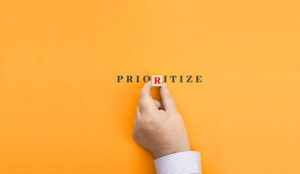Your people are your greatest asset, and this is particularly true when it comes to the contact centre. Your agents are the frontline representatives of your company and brand and are central to delivering the service and experience that attracts and retains customers.
That means that investing in ensuring their wellbeing is vital to your business.
The pandemic and lockdowns have dramatically increased the importance of focusing on agent mental and physical wellbeing.
Stress levels have soared (amongst both customers and agents), and remote/hybrid working means that employees don’t have the face-to-face assistance they’d receive in the physical contact centre.
To explore the key challenges – and benefits – when supporting wellbeing in the contact centre, the latest Enghouse Interactive roundtable brought together a group of experts to discuss the subject. The panellists were:
- Angela McKenna, Senior Vice President Global Talent Development, Salesforce
- Yvonne Hart, Chief Happyologist at contact centre outsourcer Ascensos
- Mohammed Arif, Business Group Director – Modern Workplace and Security, Microsoft
- Dr Noorzaman Rashid, Chief Executive at the Chartered Institute of Ergonomics & Human Factors
- Anthony Phillips, MD and Founder at WellKom
- Jeremy Payne, VP International Marketing, Enghouse Interactive
The discussion ranged across five broad areas:
1. The Growing Focus on Wellbeing
81% of the audience said that the focus on staff wellbeing had increased in their company due to the pandemic, with 12% saying it remained the same.
Given that there’s a clear link between happy employees and high performance, has it taken a pandemic to make wellbeing a business priority?
Angela from Salesforce felt that COVID-19 had forced every company to deepen what they were doing, and pointed out that it had helped normalise talking about mental health, removing any stigma that may have previously been attached.
As Chief Happyologist at Ascensos, Yvonne is responsible for ensuring individual and overall wellbeing amongst the company’s staff, who are spread across multiple countries and locations.
For her, employees need to be happy at home and at work, with distractions such as managing children and other worries impacting wellbeing.
You need to take a holistic approach. And while homeworking has a positive side, it is much easier to skip breaks and to overwork when not in the office. Backing this up, 27% of roundtable attendees listed working longer hours as the challenge that had grown most amongst their staff during the pandemic.
2. The New Challenges for Frontline Workers
As well as longer working hours, frontline workers also faced pressure from more angry or emotional customers, listed as the challenge that had increased the most by 23% of attendees.
Yvonne from Ascensos agreed that customers now expect more, and are more likely to become angry – and that it is a lot easier to deal with angry customers when in the office, surrounded by colleagues.
Ascensos is using Teams chats and groups to fill this gap, giving agents a way to communicate and share their feelings in real-time.
As Mohammed from Microsoft pointed out, generally technology has stood up well – but that the primary group that has benefited has been information workers.
What is needed now is to do more to digitise processes and support agent productivity and wellbeing.
WellKom’s Anthony stressed the importance of treating the root causes of these challenges, rather than the symptoms. For example, there’s a proven correlation between high blood pressure and being forced to use unfamiliar technology.
Prescribing tablets for high blood pressure won’t solve the bigger problem.
3. The New Challenges for Contact Centre Organisations
Building on the challenges for agents, what are the challenges for businesses? The main one is cultural, as Jeremy from Enghouse Interactive pointed out. Some contact centres are built on a culture where agents and employees are trusted to do the right thing, whereas others are focused more on measurement and metrics.
That could be why separate Enghouse research found that 91% of contact centre professionals are looking to leave their role in 2021, with 44% saying that stress and emotional burnout are likely to have played a part in their decision.
At a basic level, employers need to treat their staff as human beings – they need to demonstrate that they are authentically putting them first when it comes to wellbeing, adds Noorzaman of the Chartered Institute of Ergonomics & Human Factors.
Value-driven businesses will prosper, according to Angela from Salesforce – companies need to treat employees as adults, and that starts with trust.
4. How Technology Can Help
When lockdowns and remote working began, the first focus was on technology to help people do their jobs. Now organisations need to look beyond this to new ways of working that help with wellness, especially in a hybrid environment, pointed out Mohammed from Microsoft.
The company has looked at how you can replicate some of the positive elements of office working using technology. This includes enabling more relaxed meetings and helping employees to adjust between the end of the working day and moving back into home life.
Microsoft Teams has acted as a communication and collaboration foundation for many organisations, including Ascensos. It has brought staff from across Europe together, ensuring that everyone sees the same information at the same time through a common news channel.
This is supplemented by more straightforward communications – quick check-in phone calls with staff, not to talk about work, but how they are feeling.
As well as Teams, technology provides the ability to better listen and understand how staff are feeling. While contact centres have used solutions such as call recording, coaching software and real-time speech analytics to listen to the Voice of the Customer, now is the time to use it to look inward, according to Jeremy from Enghouse.
Analysing calls and collecting post-interaction feedback from agents can help show where support is needed to help with wellbeing concerns.
5. Moving Forward to a Hybrid Future
The final poll asked how companies were changing to support the hybrid workforce. Unsurprising, the vast majority (58%) were putting in place team collaboration/communication tools, with a further 15% offering a broader range of flexible working options.
Overall, Angela from Salesforce stressed that technology can be the greatest friend and greatest enemy of wellbeing. Collaboration tools can bring people together and provide the ability to make work less formal and more human, but also need to be balanced with an understanding of human needs.
In conclusion, Yvonne from Ascensos pointed out the key takeaway from the webinar – if people are happy, they do a better job. Starting from that point and building a human-centric strategy is essential to wellbeing, and business success.
This blog post has been re-published by kind permission of Enghouse Interactive – View the Original Article
For more information about Enghouse Interactive - visit the Enghouse Interactive Website
Call Centre Helper is not responsible for the content of these guest blog posts. The opinions expressed in this article are those of the author, and do not necessarily reflect those of Call Centre Helper.
Author: Enghouse Interactive
Published On: 7th Apr 2021 - Last modified: 14th Jun 2024
Read more about - Guest Blogs, Enghouse Interactive, Jeremy Payne






 Enghouse Interactive delivers technology and expertise to help bring your customers closer to your business through its wide range of customer contact solutions.
Enghouse Interactive delivers technology and expertise to help bring your customers closer to your business through its wide range of customer contact solutions. 






























